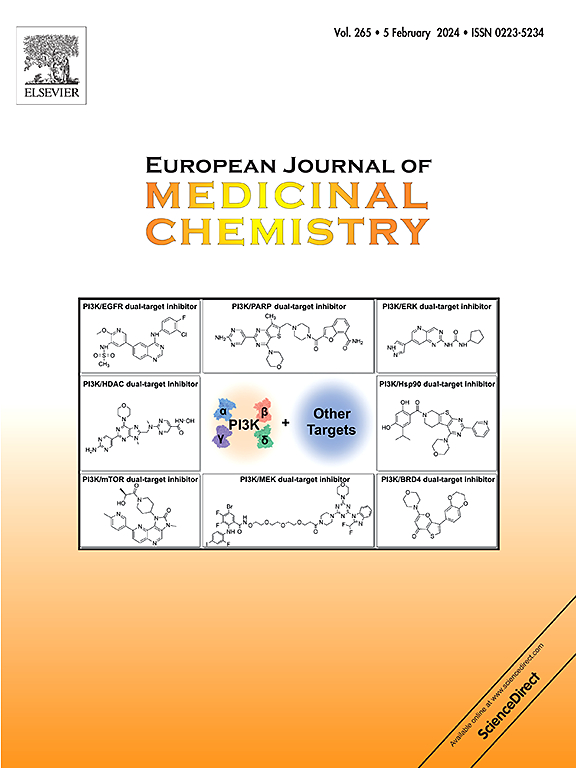PET imaging of the opioid system using radioligands: Synthetic approaches and translational applications
IF 6
2区 医学
Q1 CHEMISTRY, MEDICINAL
引用次数: 0
Abstract
Opioid receptors (ORs) are members of the G-protein coupled receptor (GPCR) superfamily and are classified into three primary subtypes: mu (MOR), delta (DOR), and kappa (KOR), in addition to the more recently identified opioid receptor-like 1 (ORL-1) subtype. The elucidation of high-resolution crystallographic structures of all opioid receptor subtypes has substantially advanced the rational design and development of opioid-based therapeutics, which are widely employed in the treatment of pain, substance use disorders, addiction, and mood disorders. The opioid system has also been investigated through Positron Emission Tomography, a powerful imaging modality that enables both qualitative and quantitative evaluation of opioid receptor-mediated signalling in the central and peripheral nervous system. Over the past decades, several radioligands with high affinity and selectivity for opioid receptors have been successfully developed for use in preclinical and clinical research. This review provides a comprehensive overview of the main synthetic approaches utilized for the development of opioid receptor radioligands. In addition, the preclinical and clinical applications of the most widely characterized opioid radioligands are critically discussed.

使用放射配体的阿片系统的PET成像:合成方法和转化应用。
阿片受体(ORs)是g蛋白偶联受体(GPCR)超家族的成员,除了最近发现的阿片受体样1 (ORL-1)亚型外,还分为三种主要亚型:mu (MOR), delta (DOR)和kappa (KOR)。所有阿片受体亚型的高分辨率晶体结构的阐明,极大地促进了阿片受体治疗方法的合理设计和发展,广泛应用于治疗疼痛、物质使用障碍、成瘾和情绪障碍。阿片系统也通过正电子发射断层扫描进行了研究,这是一种强大的成像方式,可以对中枢和周围神经系统中阿片受体介导的信号进行定性和定量评估。在过去的几十年里,一些对阿片受体具有高亲和力和选择性的放射性配体已经成功地开发出来,用于临床前和临床研究。本文综述了阿片受体放射配体的主要合成方法。此外,最广泛表征的阿片类放射配体的临床前和临床应用进行了批判性的讨论。
本文章由计算机程序翻译,如有差异,请以英文原文为准。
求助全文
约1分钟内获得全文
求助全文
来源期刊
CiteScore
11.70
自引率
9.00%
发文量
863
审稿时长
29 days
期刊介绍:
The European Journal of Medicinal Chemistry is a global journal that publishes studies on all aspects of medicinal chemistry. It provides a medium for publication of original papers and also welcomes critical review papers.
A typical paper would report on the organic synthesis, characterization and pharmacological evaluation of compounds. Other topics of interest are drug design, QSAR, molecular modeling, drug-receptor interactions, molecular aspects of drug metabolism, prodrug synthesis and drug targeting. The journal expects manuscripts to present the rational for a study, provide insight into the design of compounds or understanding of mechanism, or clarify the targets.

 求助内容:
求助内容: 应助结果提醒方式:
应助结果提醒方式:


